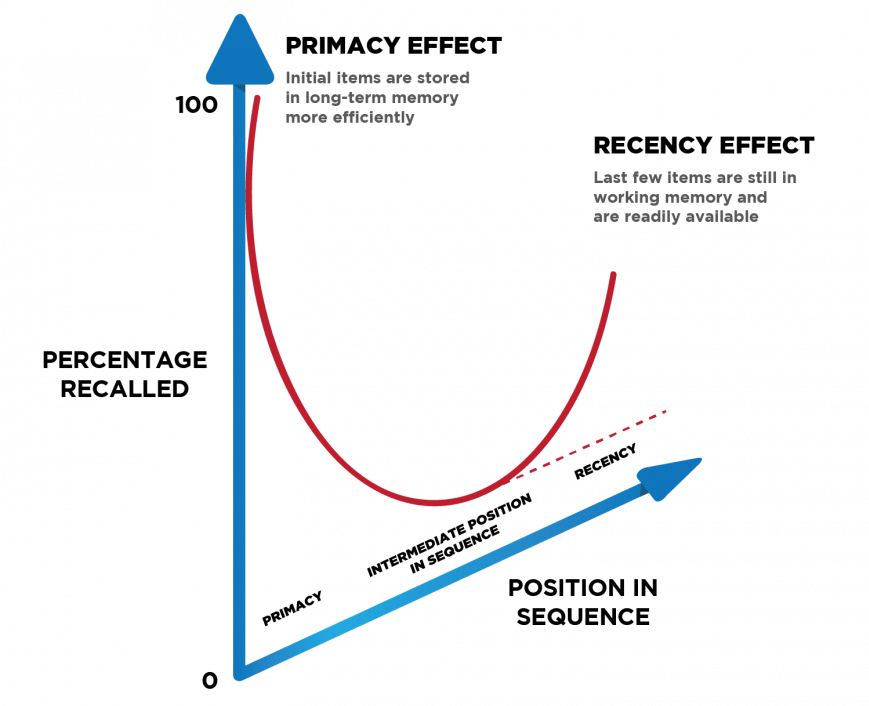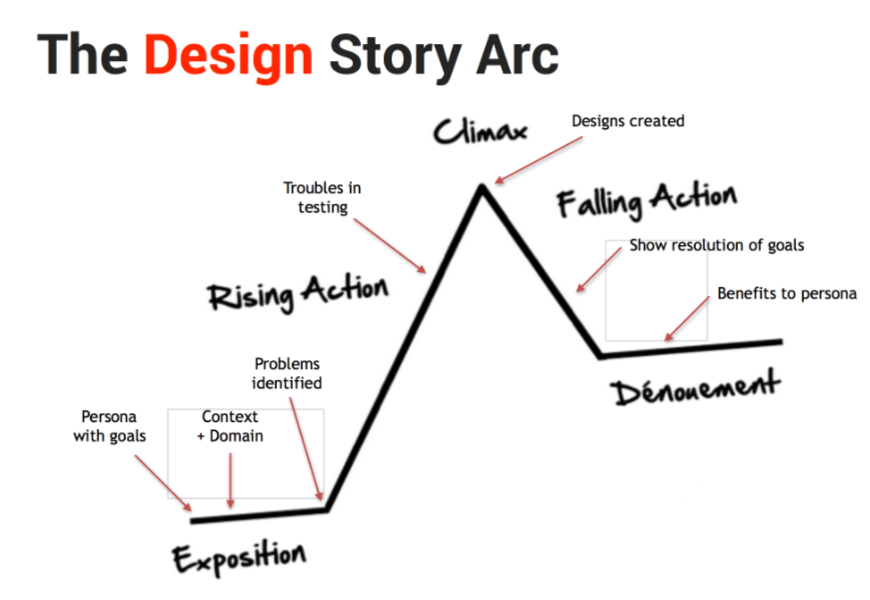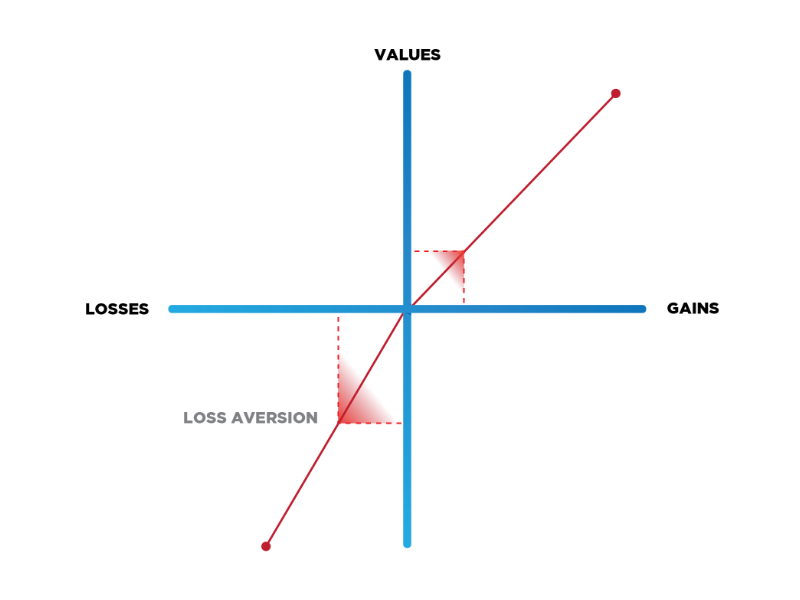Video marketing is all the rage but crafting compelling and engaging videos is a task that defeats many marketers, and since video campaigns are often costly and time-consuming, there’s an even greater pressure to achieve performance and results.
Video Marketing and Psychology

We all probably have an understanding of the link between marketing and psychology but whilst some psychological techniques like FOMO (fear of missing out) are ubiquitous in the marketing world, there are many lesser-known angles that marketers can take to yield better results from their video marketing content.
Arming yourself with psychological hacks for video content can greatly enhance the effectiveness of your content.
Video is certainly not all about flashy visuals and graphics, it’s about the underlying tone, message and communicating effectively with your audience.
Video Psychology Fundamentals
Before we take a look at the more specific psychological hacks that you can utilise in your video content, lets overview what forms the foundations of video. Scientific research has classified 5 key characteristics which provide the foundational ingredients for watchable and memorable video – consider them as the 5 pillars of video content!
- Humour
- Easy to follow
- Emotion
- Conversational
- Relatability
Packing all of this into a short video may seem like a difficult task and that’s before you’ve thought about stuff like FOMO or The Nose Principle. Do not despair, though, we’ve compiled a list of the top techniques alongside notes on their benefits and the way to implement them.
Concept: The Serial Position Effect and Familiarity

Both of these concepts loosely revolve repetition and familiarity. If something is repeated, we become more familiar with it and in turn, this unlocks a greater satisfaction as we gain a greater understanding. Think of your favourite things to do, or eat, etc – you repeat them and may even repeat the rituals surrounding the activities as they satisfy you.
The Serial Position Effect specifically discusses the greater efficacy of information placed either early on or late on in a piece of content. Research shows that we perhaps have a tendency to ‘tune out’ during the middle of a piece of content and that our memory of the start and end is accentuated.
Benefits:
Numerous scientific studies have assessed how repetition aids our ability to learn and understand and this has been tested in the context of advertising, with results showing that increased exposure to an advert enhances its effect. Using some repetition in combination with the Serial Positioning Effect can massively enhance your video’s memorability.
How to apply it:
It wouldn’t be wise to repeat the same phrase of the clip too frequently throughout a short video but by utilising your intro and conclusion to the best effect, reinforcing each other, you can help readers remember important information.
Your conclusion could include a quick-fire bullet-pointed roundup:
Remember, XYZ is sure to help you:
- Increase company yield
- Turbocharge your multi-channel marketing campaigns
- Generate more cash for your business
These bullet points could offer answers to the questions you posed in your intro:
‘Do you have a burning desire to increase yield, boost your marketing efforts and generate greater profits?’
By referring to your key points in both the intro and outro of your video content, you’ll be able to reinforce your most important concepts at a time when they are most likely to be remembered.
Concept: The Nose Principle
Your nose is always visible but unless you pay attention to it, you don’t take notice. This explains how we can fail to see things placed right under our noses. Many magic tricks and sleight of hand are based on this and if you’ve ever looked for a DVD amongst your vast collection or similar then you might have experienced how we sometimes just cannot see something that is seemingly positioned directly in front of our eyes.
Scientifically, this is known as ‘sustained inattentional blindness’ and one famous test even saw that 83% of radiologists failed to spot an image of a gorilla on an X-ray, even though the image was many times larger than the malignant masses they were trained to identify.
In video content, you want to avoid a scenario where your viewers reach the end and miss the point of your video, even if its point and purpose was rather obviously placed in its duration. To avoid this, you must make your CTA overtly obvious.
Benefits:
The Nose Principle is not something that we want to embrace but rather avoid. Use a call to action (CTA) to direct viewers after you’ve caught their attention.
How to Apply it:
Always include a CTA. Some typical CTAs:
- Subscribe for more
- Follow for more
- Share
- Comment
- Visit website
- Apply coupon code
- Get your free gift/guide
Second is CTA placement. Your CTA is naturally going right under your viewer’s nose but we don’t want it to get caught up with the Nose Principle itself!
Research from Wistia assessed 3 typical CTA positions. They analysed 481,514 video CTAs from a total of 324,015 videos!
- Pre-roll: If you place your CTA before your video starts in earnest then you’ll ensure that your viewers do indeed see it. Whether they remember it by the end of the video is a different thing, though. Evidence suggests that just 0.1% videos feature pre-roll CTAs but the case might be that these videos also contain a later post-roll CTA to take advantage of the Serial Positioning Effect.
- Mid-roll: The Serial Positioning Effect would seem to suggest that mid-roll CTA placement is a poor idea but more videos (4%) contain a mid-roll CTA than a pre-roll CTA.
- Post-roll: It may not come as a surprise that a post-roll CTA is most popular but the 95.9% majority is very strong. Post-roll CTAs capture viewers that watch the entire video and thus, it’d be rational to think that they are amongst at their most engaged.
Concept: Include Human Faces

Human faces have an important role in all human communication – the most important of all according to Dr. Albert Mehrabian’s famous 55%-38%-7% rule which suggests that a 55% majority of all communication is body language and expression!
After all, we have spent thousands of years communicating with each other face to face and whilst screens have steadily invaded every minute of our waking lives, it’s going to take more than just a few decades or centuries to undo the entirety of human evolution!
For marketers, faces tap into our evolutionary biology and tick 3 of those 5 pillars of video marketing: they’re easy to follow, relatable and conversational. In 2005, neuroscientists from Caltech confirmed that we’re hardwired to respond to faces and over time, other research has reinforced the profound psychological impact that faces have on our perception of trust.
Videos allow you to display human faces and you should take advantage of this to build conversation, trust and relatability.
Benefits:
As we’re hardwired to perceive the trust of a human face, your video’s content is more easily transferred through its medium when faces are used to convey its information. Faces reassure us, engage us and incite emotions – all of these things can help you capture viewer attention.
How to apply it:
Feature genuine human interaction where possible – substitute text explanations with live demonstrations, state real opinions and feature genuine conversations within your videos.
Some videos like interviews will naturally incorporate faces but their expressive qualities are also extremely important.
Research confirms the greater effectiveness of happy faces when building rapport and trust and thus, you should always seek to express positivity for your video.
Additionally, research has confirmed that faces are the most powerful image to include on video thumbnails to attract viewers and boost click-through rates with just one caveat; too many faces fit into a crowded thumbnail decrease engagement.
Concept: Create a Feeling of Reciprocity with Free of Charge Content
The law of reciprocity states that one is compelled to reciprocate generosity, kindness, positivity or another action to the party that extended the gesture in the first instance. So essentially, we are compelled to give back to those that gave to us.
Benefits:
Creating reciprocity firstly earns trust by portraying you or your brand as willing to make a generous gesture. There will always be a percentage of people who feel that they owe you nothing in return but for the most part, the law of reciprocity draws people in to interact with your brand and follow your CTA.
How to apply it:
The methods of applying this psychology revolve around giving out something for free in the hope that the viewer responds. You could try:
- Offering your prospects/customers a unique discount code within your video content.
- Provide an ungated resource at the end of your video.
- For online video content:
- Attach relevant checklists and spreadsheets in your video descriptions.
- For offline video content:
- Include free marketing collateral with your video mailers.
- Provide your video in USB format so that your clients can watch your video content when it’s suitable.
Concept: Capitalise on FOMO (fear of missing out)

Inciting a state of urgency is an old yardstick technique for marketers and advertisers but it remains a staple due to its unerring reliability.
We’ve all experienced FOMO – rushing to get home from that meeting so you can make a dinner date on time with your friends, rushing down to the shops to get your foot in the door on Black Friday, cancelling that appointment so you can head to that festival or concert – these are all typical examples of times we forgo something (like our cash) to get what we want before time runs out.
“Hurry whilst stocks last!” – the most typical FOMO line ever.
In the world of marketing and commerce, FOMO is regularly capitalised through flash sales, limited place offers and limited stock items. Many people are familiar with FOMO and see it as a ploy, e.g. the high-street shops that are perpetually offering closing down sales despite never actually closing down – keep your FOMO precise and honest for best effect.
Benefits:
- Creating a sense of urgency enables you to convert prospects into customers more easily.
- Enables you to tip the undecided (people on the fence) over the edge – these people would have previously not responded to your call to action without FOMO.
How to apply it:
Capturing people’s FOMO revolves around limitations. Create scarcity by limiting the number of people that can receive your offer or by setting a specific time when your offer will expire. Let people know that an exclusive service is only open for a short period of time, etc.
Concept: Create A Powerful Introduction To Instantly Hook Your Audience
It may come as no surprise that your video’s introduction is crucial to continued viewer engagement. Our attention spans have decreased, even in the last 30 or 40 years, and this only places more power in your video’s introduction – with great power comes great responsibility – the responsibility you have to make your introduction good!
Benefits
If you hook people in your intro then the chance that they’ll watch the rest of your video skyrockets: Facebook research into video consumption revealed that 45% of those who watched 3 seconds of a video watched it for at least 30 seconds. A great introduction heightens the continued engagement of viewers and reassures them that your content is actually valuable and worthwhile.
How to apply it:
An introduction should summarise the content so someone knows exactly what they’re about to watch but it should also include a hook that occurs in the first few seconds.
- Leverage the information gap theory. This incites curiosity which gives the viewer an itch to watch on. The information gap theory essentially creates a feeling that the viewer is missing a key or obvious piece of information, enticing them to look for the answer within the video’s content. Even though the explanation of the gap theory was revealed straight away in this passage, you may have even experienced it when reading – if you weren’t initially aware of what it the gap theory was or meant.
Gap Theory Example: “Print marketing is back in business and bigger than ever.” This incites viewer questions like “where did it go?” and “why?”
“Marketing will never be the same again.” This begs the questions “why?” and “what has happened?!”
- Pose a question. This is conceptually simple: ask pertinent questions in your intro and your audience will feel personally addressed.
Example: “Are you making these terrible marketing mistakes?”
Concept: Harness the power of emotional storytelling

Stories captivate us and have done for some 27,000 or more years when cave paintings were thought to depict fictional events. You could say that storytelling is in our DNA – it is certainly intrinsic to human culture and its powerful emotional impact lends itself to marketing and advertising content.
Benefits
Storytelling specifically increases dopamine production leading to a higher state of viewer arousal, instigates neurocoupling and mirroring which makes the viewer relate their own experiences to the narrative and stimulates our sensory cortex which makes the narrative feel more relatable and real. It humanises the content and brings it to life.
This all points towards greater engagement.
How to apply it:
Harnessing the power of narrative is tricky but there are tons of awesome examples of it in this overview of inspiring marketing videos. In fact, strikingly, virtually every single one of these videos contains some form of narrative-driven subject matter, even despite their obvious fundamental differences, positions in the marketing funnel and ultimate purposes.
For example, Coca Cola’s “The Last Customer” forges an impactful narrative about Filipino workers during the Christmas period. Coca-Cola send in a “Last Customer” before Christmas, who proceeds to generously assist the workers by buying them presents, a large meal, etc. We build an emotional connection through the advert’s powerful narrative and are then essentially relieved of our emotional anguish by Coca-Cola who come out as the good guys.
Contrastingly, marketing brand Eloqua also uses a narrative driven plot in their video about “Marketing Mark” but this time, the video is upbeat, comedic and positive. Its quirky format not only makes us smile and appreciate the novelty but it also communicates the brand to us effectively and in relatable terms.
Creating a narrative means creating characters, or representations of different subjects or opinions. For example, you might have a character which embodies a typical customer portrayed in a positive light or a character which embodies a villain which you seek to defeat with your product.
Concept: Loss Aversion

Loss aversion refers to our tendency to place greater efforts into our failures rather than into our successes, just because we’re afraid of losing more. An example might be holding onto a falling stock until it basically hits rock bottom, all because we want to avert the comparatively small loss we experienced when the stock started to fall.
Loss aversion techniques portray risks rather than benefits and though both should be combined, blending the ‘dark’ and ‘light’ side of a subject in your copy can yield effective results.
Benefits:
Loss aversion ties in closely with FOMO. It makes people fear what will happen if they don’t listen, rather than focussing on the good that might come if they do listen. This increases the urge to buy and the urge to follow your CTA for more information.

How to apply it:
Loss aversion tactics seek to educate people on downsides and risks, making them fear losing out or not knowing that vital piece of information. Your video’s title is important in setting the scene for whether your video is benefit or loss driven.
Example: “Avoid these Critical Marketing Errors in Just 5 Steps.”
“5 Reason Why You Aren’t Gaining Muscle.”
“10 Things that Will Make you Seriously Reconsider your Sales Goals.”
BuzzFeed analysed millions of titles and discovered that title phrases which hinted at loss aversion performed really well. These titles mostly focussed on outlining the bad things that you can relieve by reading the article, thus averting a potential loss.
Concept: Paradox of Choice
Schartz, in his 2004 book, “The Paradox of Choice – Why More is Less” stated that too many options can result in the lack of any decision at all. If you’ve ever heavily researched a product category to discover the very best items then you might’ve found yourself getting gradually frustrated as you became overwhelmed with the ever-increasing potential options. In the end, you think “screw it” and side with your gut choice, or you might just put off the purchase altogether, even despite your time-consuming research!
Benefits:
The moral of the story for marketers is to keep choices finely tuned and limited. You don’t want to overwhelm prospects with options as this will likely distance them from making a decision. Keeping buyer options limited shines greater light on your products, rather than dispersing it over a sea of choice.
How to Apply it:
Keep your video content streamlined to just your very best options. You might offer a vast plethora of services with tons of bolt-ons, additional products and options of many forms but video content is not the time to display this.
Conclusion
The psychology of marketing and advertising affects us all and many of these principles and concepts affect us outside of marketing and advertising also.
Whilst gaining a perfect understanding of the anatomy of a piece of video content is ultimately a fairly complex task, familiarising yourself with as many components as possible will help you formulate more effective marketing videos in the future.
